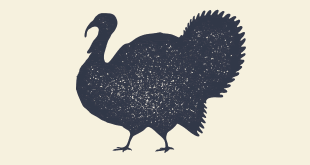 From the moment we put a piece of meat into our mouth, until it has been used up by the body, this mouthful of food has a very strange journey. The meat is gripped by the lips, ground by the teeth, pounded by the tongue, mixed with saliva and then swallowed. Three pathways meet at the back of the throat: one goes to the lungs, one to the nose and the third to the stomach. At the moment of swallowing, two small fleshy valves close off the first two passages. The uvula, which normally hangs from the soft palate, rises, and the epiglottis behind the tongue sinks against the glottis, blocking the larynx.
From the moment we put a piece of meat into our mouth, until it has been used up by the body, this mouthful of food has a very strange journey. The meat is gripped by the lips, ground by the teeth, pounded by the tongue, mixed with saliva and then swallowed. Three pathways meet at the back of the throat: one goes to the lungs, one to the nose and the third to the stomach. At the moment of swallowing, two small fleshy valves close off the first two passages. The uvula, which normally hangs from the soft palate, rises, and the epiglottis behind the tongue sinks against the glottis, blocking the larynx.
There is now only one way open for the mouthful of food that is the esophagus. The esophagus is a long canal which extends, from the pharynx to the stomach. The muscles in the esophagus propel the meat towards the stomach. When it arrives in the stomach, the ball of food is again pounded and crushed, as if were in a food mixer. It is also mixed with juices produced by the stomach. These prepare it for digestion. Digestion takes place in the small intestine. Here, substances called digestive enzymes, from the pancreas and intestine itself, attack the most abundant materials in the meat the proteins. These enzymes work most effectively at body temperature. The proteins are rapidly broken down into smaller units called ‘amino-acids’
This is what digestion is: the breaking down of food into particles small enough to pass into the blood. Amino-acids are small enough to pass through the small intestine and the walls of the blood vessels. They are carried by the blood and lymph into the cells. In the cells, the amino-acids (the end products of digested proteins) are attached to each other, to form new proteins. And so, thanks to this fantastic chemical factory called the body, the meat of animals is transformed into ‘human meat’.
 Kids Portal For Parents India Kids Network
Kids Portal For Parents India Kids Network






